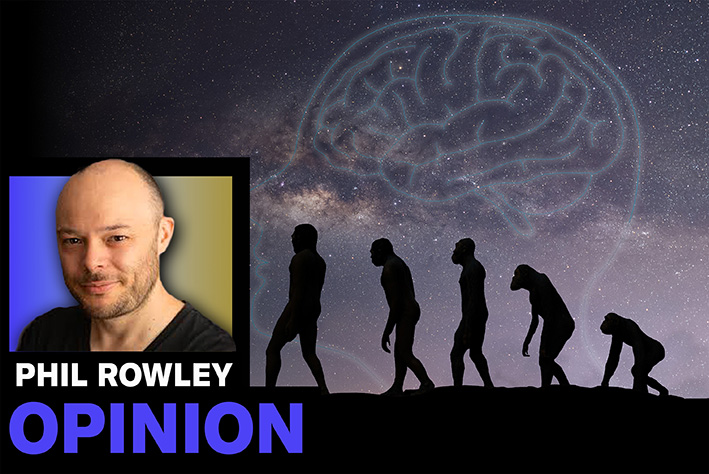Nature vs nurture: Exploring the science behind our drive to innovate

Opinion
Is innovation in our DNA or is it a learned behaviour? Actually, we need to possess a burning desire to innovate but we also need to be present in an environment where innovation can flourish.
What makes us progressive, innovative and adventurous as a species?
Is it shaped by 200,000 years of biology? Or is it a learned behaviour, passed down from generation to generation?
Did we reach the moon because the sheer accretion of human knowledge made it inevitable? Or because we are programmed by evolution to feel the outward urge and the moon simply represented a new land for us to explore?
Nature or nurture: which makes us reach for the stars? According to Stanford neuroscientist and MacArthur genius award winner Professor Robert Sapolsky, the answer is clear: it’s both.
Genes x environment = behaviour
I am near finishing Sapolsky’s magnum opus, Behave. It’s a bewildering grand tour of the neurochemistry behind our decision-making capabilities, taking in the amygdala, the prefrontal cortex, synapses and axons, norepinephrine and testosterone.
It’s all in the service of explaining the circuitry of bravery and generosity, of fight and flight, of disgust and discrimination. If you like Yuval Noah Harari but want some additional hardcore science to back up any deep insights on homo sapiens, this is the book for you.
Sapolsky is at pains to point out that genes and the personality traits they encode are not our destiny. Rather, it is their combination with our environment that triggers their expression or suppression, and ultimately shapes our behaviour.
For example, if you were born in 1987 and have a natural talent in algebra and mathematical reasoning, you could forge a career as a programmer. If you were born in 1274 and have a natural talent in algebra and mathematical reasoning, you may never discover that talent.
Why? Because you are probably not literate, have no access to ink and paper, and are likely surviving from meal to meal. In short, talents prescribed by genes go unexpressed if the environment is not conducive to their showcasing.
Thus, asking whether a human’s personality traits are the result of genes or environment, says Sapolsky, is like asking if a rectangle gets its size from its width or length. It is one multiplied by the other. In short, genes multiplied by environment equals behaviour.
Notably, though, this could also help us with the way we think about innovation.
Innovation as a behaviour
Citing a boggling array of scientific studies on the biochemistry of behavioural traits, Sapolsky draws attention to legions of cases that explain how our cerebral make-up can inform our bravery or timidity. How open we are to experimentation, novelty and risk is the product of both our personal traits but also our membership of larger tribes, their values and their native terrain.
First, from a pure scientific point of view, it’s possible to detect and isolate genes for daring and risk-taking. For instance, DRD4 causes an absence of fear. By deactivating or turning down the volume on the amygdala, the part of the brain responsible for “fight or flight”, DRD4 can mean those who encounter a particular danger — a clifftop, a tiger, a lightning storm — are less likely to deem it a risk.
It’s fascinating to discover, then, that DNA testing for the DRD4 gene, particularly a marker called 7R, reveals that indigenous populations located at the southern tip of South America are much more likely to possess it. The trait for venturing into the unknown is still present today in their descendants; the genetic echoes of prehistoric tribesmen who were unafraid to scale the cliff, jump the ravine or swim across the river.
Notably, however, we know the environment plays an equal role in behaviour. The “adventurer gene” does not always guarantee an exodus in search of new experiences. For instance, it may not have been activated in the tribe living next to the clean river stocked with fish, as they were perfectly happy with where they lived. Similarly, the trait could have been a great irritant to those wracked by wanderlust but who had not yet mastered the technology of canoes, and so could not leave the island.
Again, it’s not enough to be a “neophile” — someone with a predisposition for novelty. The environment itself needs to support those who want to innovate. Sapolsky cites studies of monkeys using innovative “tools” — specifically long branches dipped into termite mounds to retrieve insects for food. The use of this “cutlery” can only be passed from generation to generation by copying those who possess the knowledge. In tribes, we see educating, instructing, learning. Aping, if you will.
Only by social transmission can innovation flourish, because there is no such thing as genetic learning. We cannot automatically know what our father knows via biological means alone. “Culture” is how we transmit our thinking by non-genetic means and it’s only through interpersonal communication that technologies can be scaled and adopted. We watch. We copy. Monkey see, monkey do.
Innovation today
So where does that leave us with our own efforts to be innovative? It means we need to satisfy two sets of conditions. First, we need to possess a burning desire to innovate; but second, we need to be present in an environment where innovation can flourish.
A business where its employees desire the new and the next, but are hampered by disconnection, bottlenecks and poor sharing of learning, is a business that is reducing its chances to do pioneering work.
Likewise, businesses comfortable with their position by a coast teeming with seafood have no incentive to leave the shore in search of new lands and are less likely to prioritise innovation.
But 200,000 years of human history has given us a model for how we can be pioneering. We need the talent, but we also need the tools and terrain to nurture that talent.
Innovation today, as throughout human history, requires both innate abilities and conditions to thrive.
Those who wish to break new ground will need both.
 Phil Rowley is head of futures at Omnicom Media Group UK and the author of Hit the Switch: the Future of Sustainable Business. He writes a monthly column for The Media Leader about the future of media.
Phil Rowley is head of futures at Omnicom Media Group UK and the author of Hit the Switch: the Future of Sustainable Business. He writes a monthly column for The Media Leader about the future of media.




